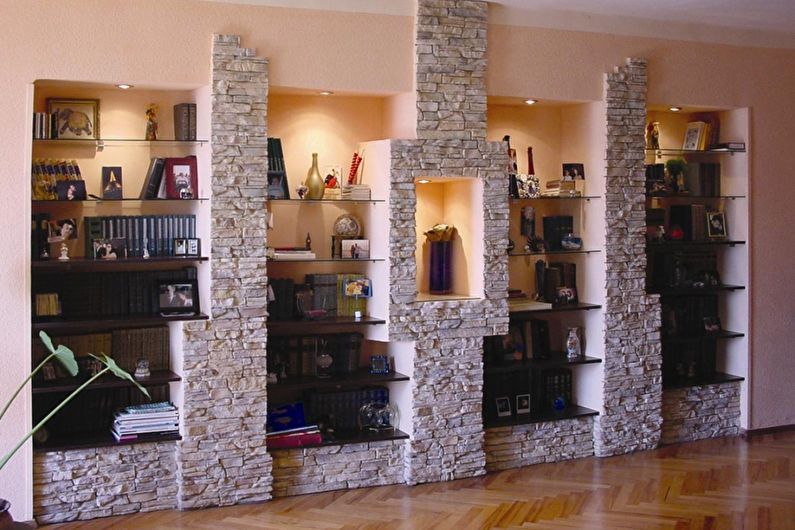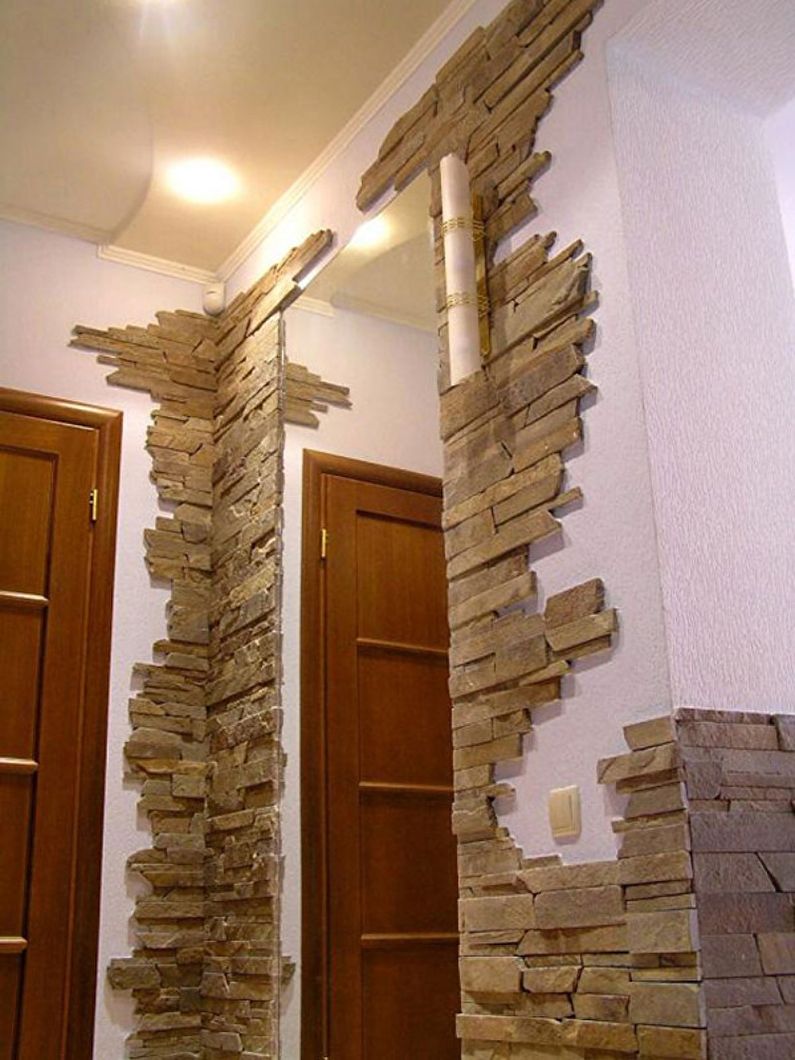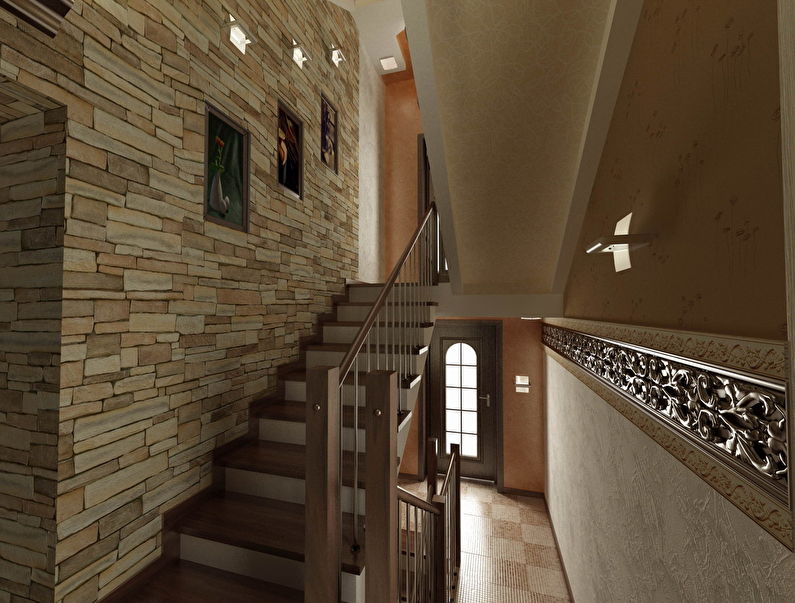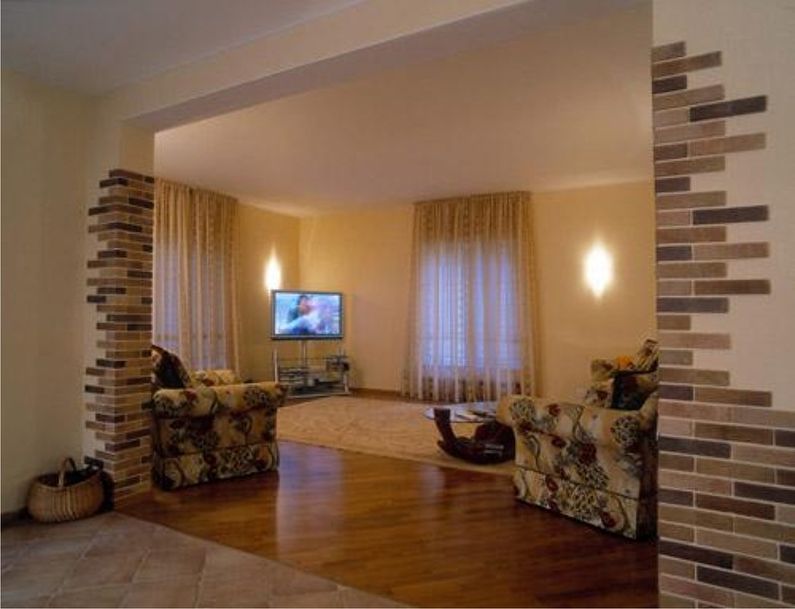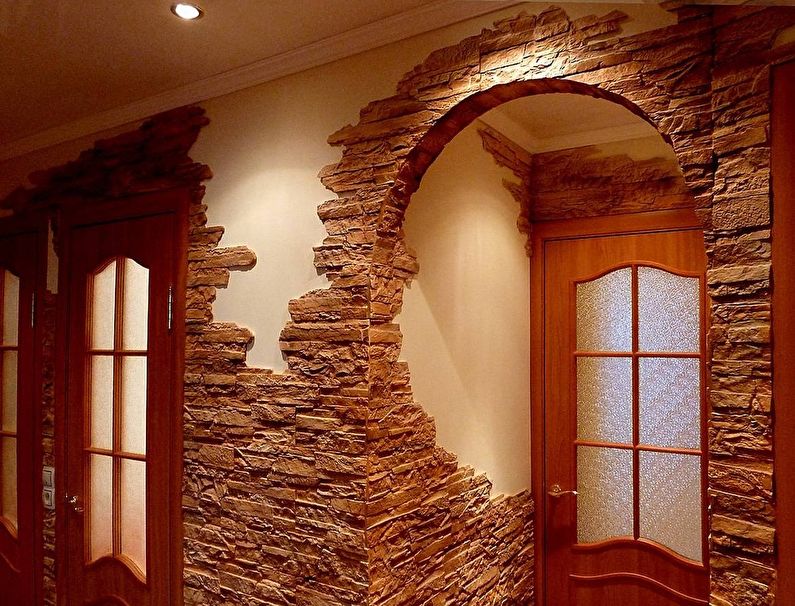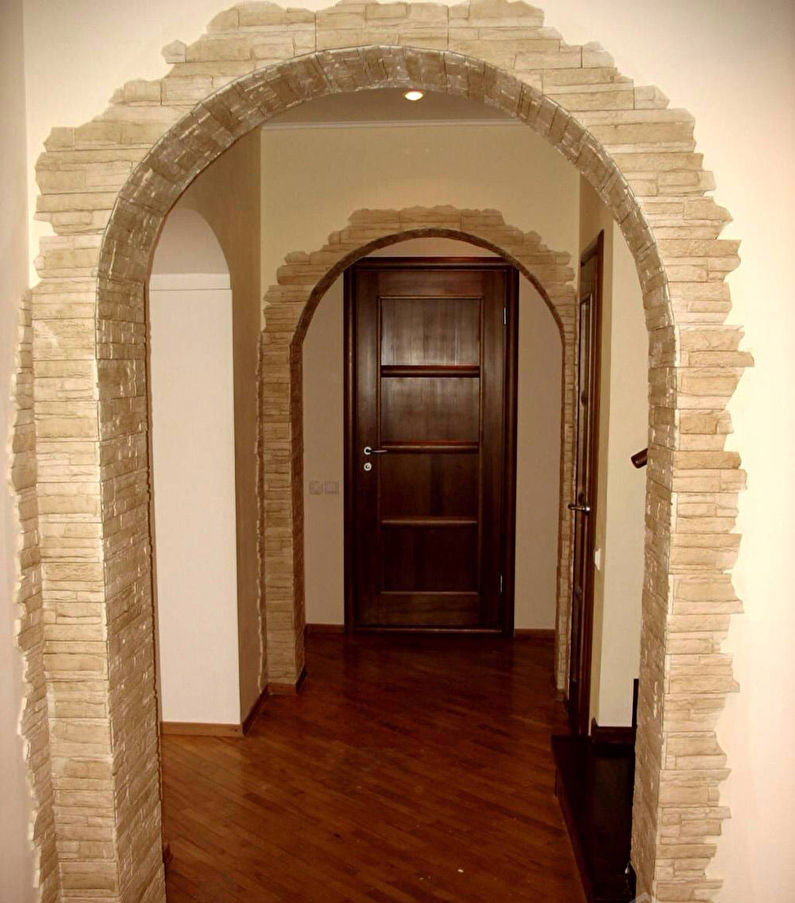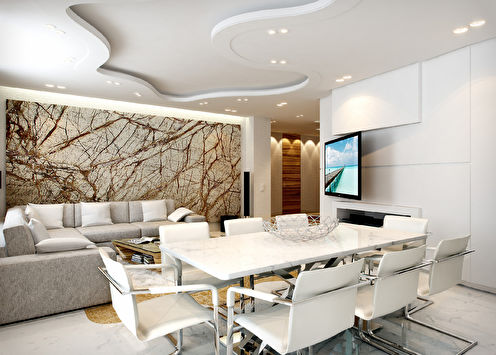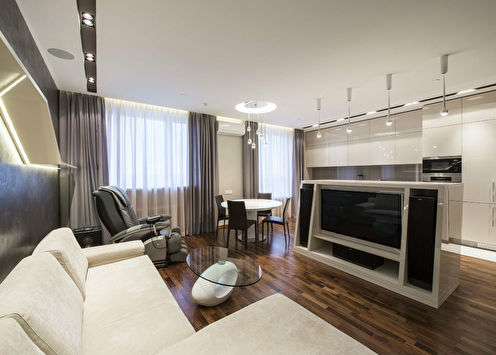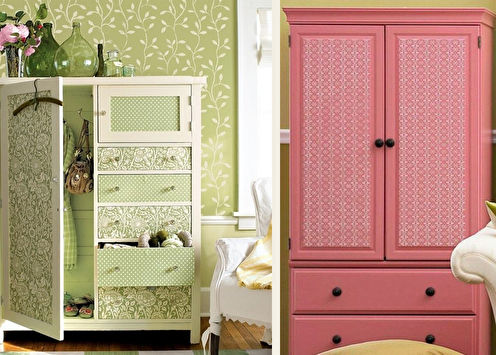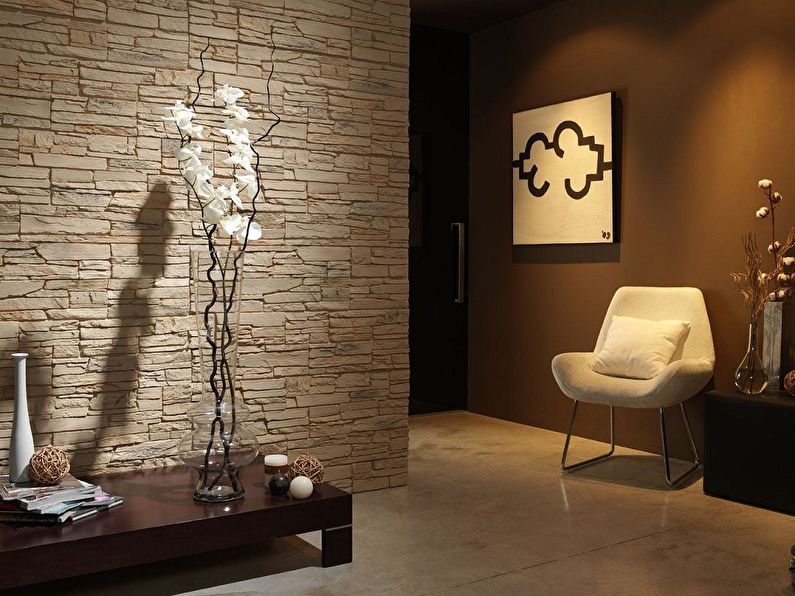
As the most durable and reliable material, stone has been used for construction, probably since the appearance of the first people on Earth. The Egyptian pyramids, the Great Wall of China, the megalithic structures of the Mayan civilization, ancient temples and medieval fortresses are laid out from it.
A hundred years ago, only wealthy owners could afford stone houses — the rest were content with clay and wooden huts. And now, despite the huge variety of building materials, the use of natural sandstone, granite, marble in the interior are a sign of elitism.
However, imitations of natural stone look no worse, and at the same time they are more affordable, easier to process, and sometimes have better resistance to changes in humidity, temperature, mechanical stress. More information about this type of finish and how to use it will be described in this article.
What is a decorative stone?
Artificial stone has an external resemblance to natural, but it is not mined from the bowels, but is made manually or industrially. The methods are similar to each other - the solution is poured into a mold (silicone, plastic, metal), dried, sometimes heat treatment (firing), coating with various impregnations or glazes.
Depending on the composition of the raw material, the product can be concrete, ceramic, gypsum, acrylic, polyester. There is also the so-called liquid stone in the form of a non-solidified mixture, as well as flexible - a kind of stone veneer in rolls or sheets.
For outdoor work, frost-resistant plates are used, with minimal porosity and coarser in appearance. The interior uses lightweight, subtle elements. Their environmental friendliness largely depends on the binder and fillers.
So, cement, sand, gypsum and clay are not inferior to natural stone, freely passing air and moisture, but acrylic resins are safe only at low temperatures - it is not recommended to place them near a fireplace, oven and other heating appliances. If, even at + 30 ° C, a synthetic countertop, bathtub or sink exudes an unpleasant odor, it is better to refuse to purchase them, since this is often a sign of poor-quality, toxic to health ingredients.

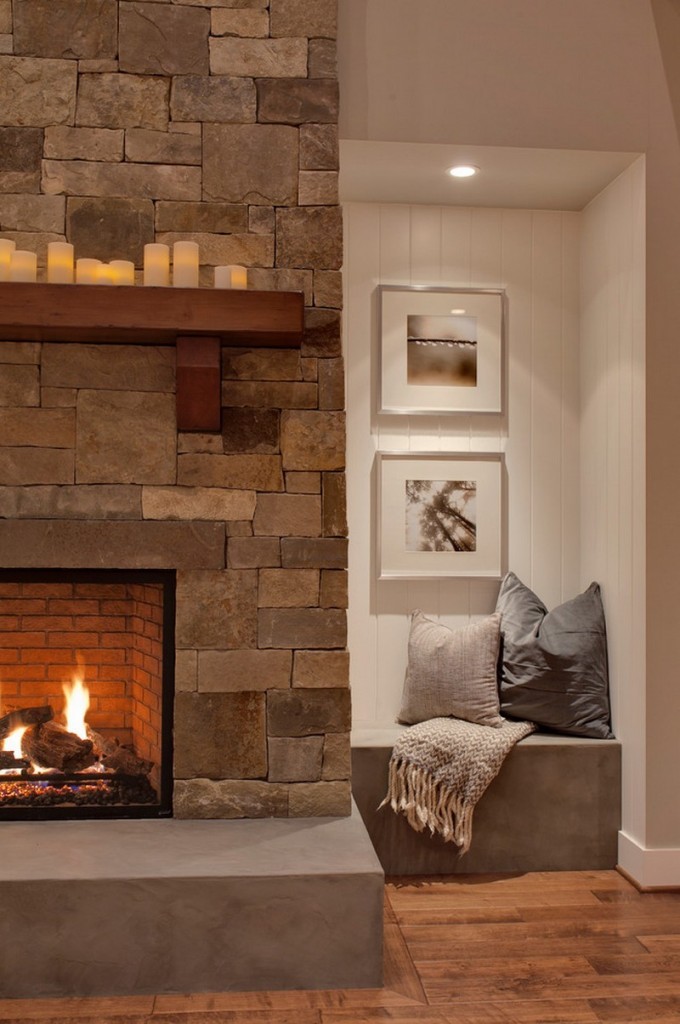
Application features
In one form or another, decorative stone can be seen anywhere: they decorate houses, apartments, offices, cafes, train stations and administrative buildings. In dry rooms, relief artificial sandstone, shell rock, cobblestone, slate are more common, and in damp and crowded places - smooth “polished” granite, marble, glazed brick tiles.
In the first case, the stone gives the interior a cozy and warm look, in the second - it resembles the seashore with its rounded pebbles, as well as turned boulders. From a practical point of view, this also makes sense, because the glossy surface is much easier to wash, and the matte roughness under the influence of water and steam takes an unsightly appearance.

Decorative stone in the interior of the living room
The energy of the stone, even decorative, brings to the house a feeling of some stability, peace and tranquility. Perhaps, on a subconscious level, it is associated with the reliable walls of a fortress protecting from enemies or the constancy of the homeland.
This material is indispensable for facing an existing fireplace, because it best conveys the heat of the flame into the surrounding space. In apartments where it is not possible to arrange such a romantic heating, they often install electrical imitations or just niches with candles.In this case, both the portal itself and the wall can be laid out with stone - in whole or in part.
Sometimes, with the help of a stone, they simply set up interior accents, for example, frame corners, arches, ledges, columns with them. Next to such a noble addition it is worth using soft, natural shades, wood and leather textures, natural fabrics and furs, soft yellowish-white light. Incredibly beautiful against the background of the stone look green plants, especially curly.
An imitation of sandstone and raw granite cuts is ideal for decorating a living room in a country or chalet style. Gypsum and light marble will help to reproduce the classic atmosphere, but in the loft and minimalism the most appropriate would be a stone tile under a brick.

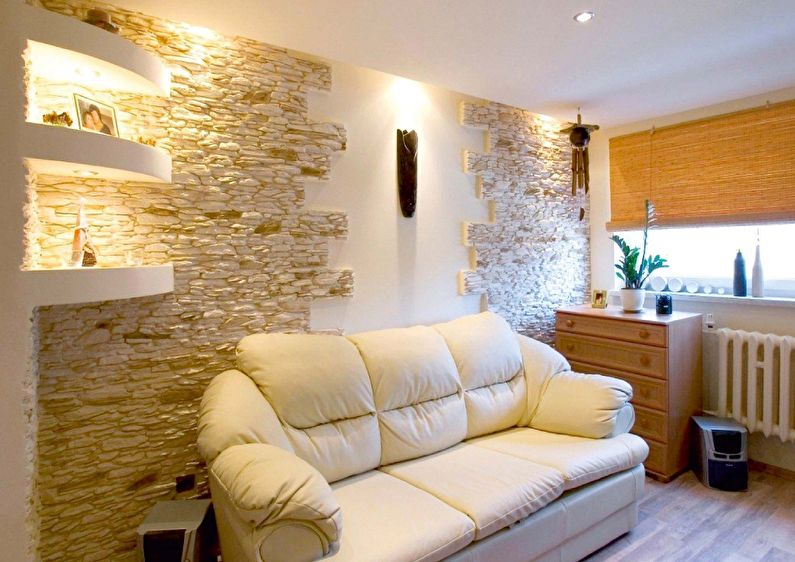
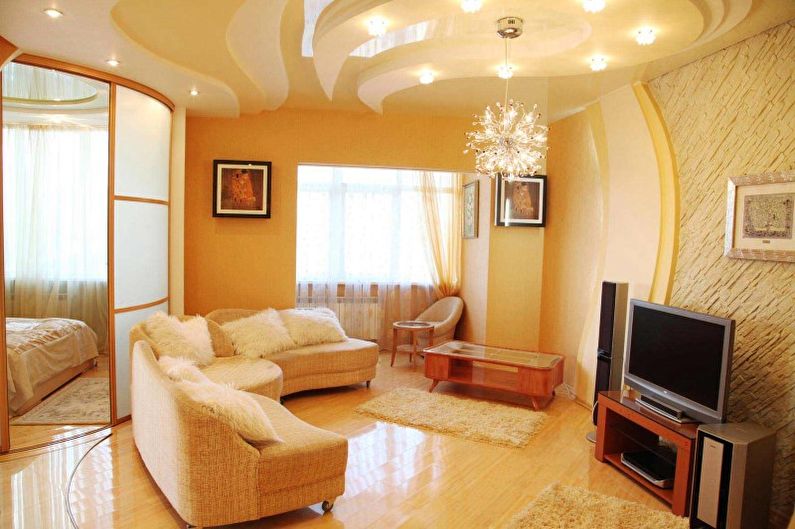
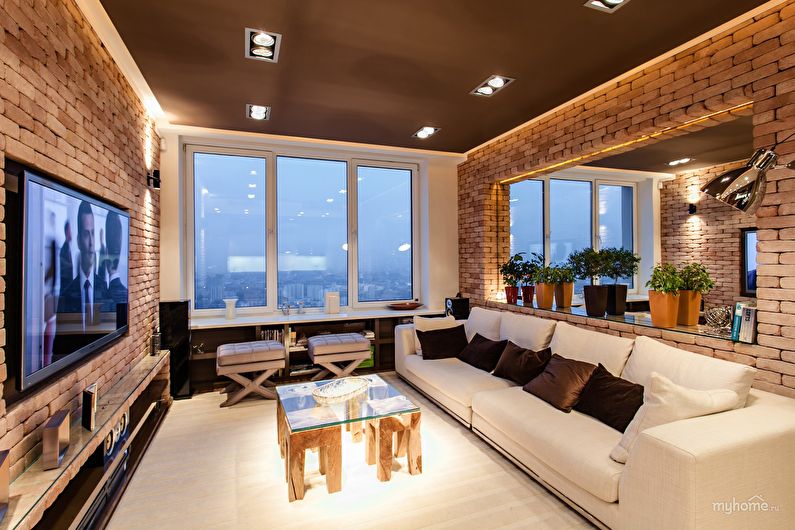
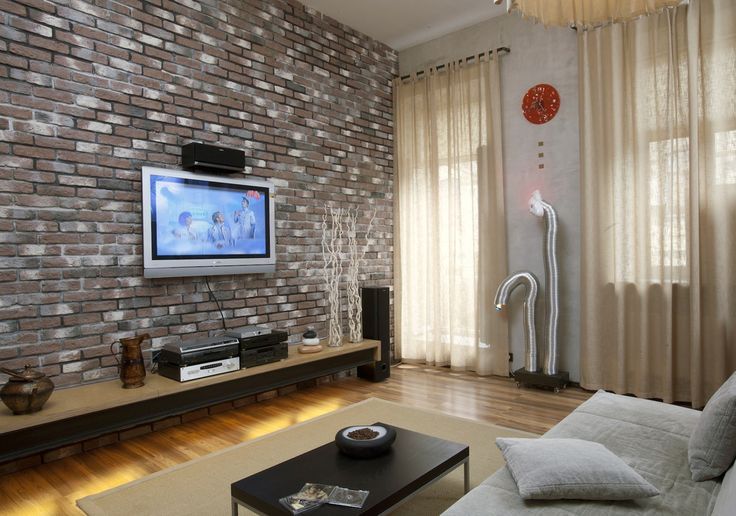
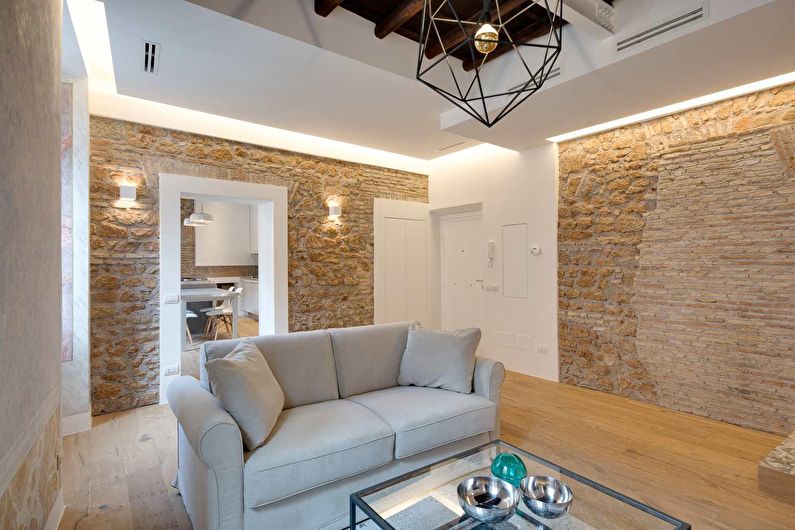

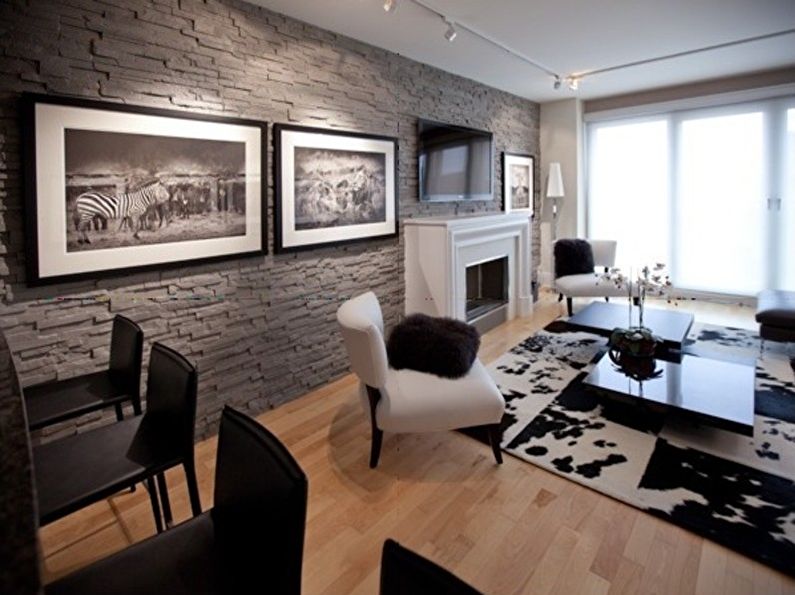
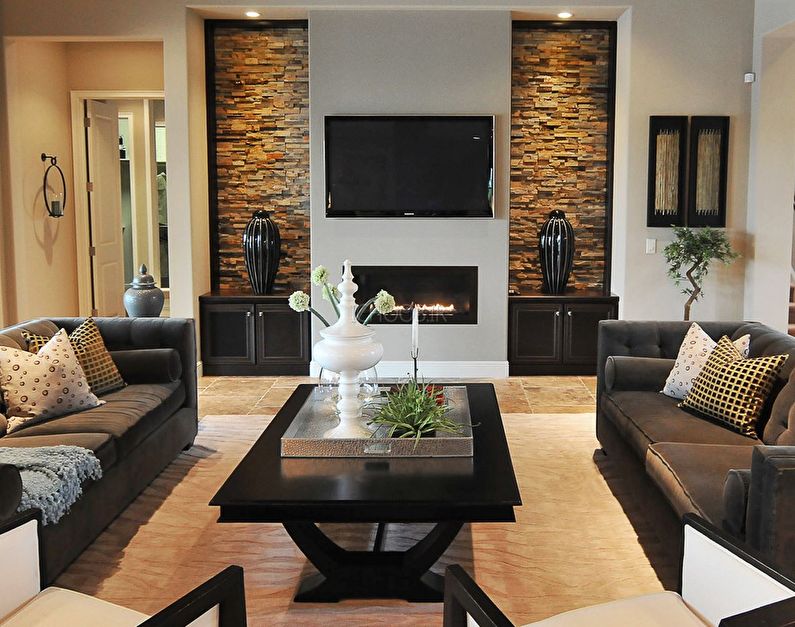
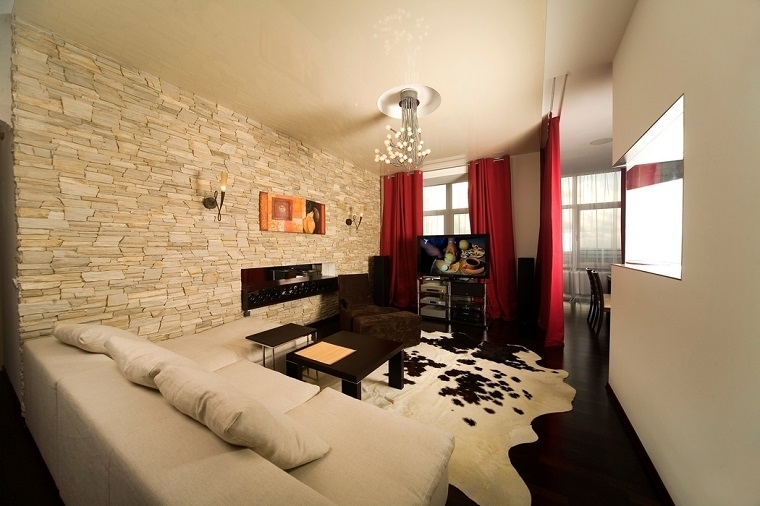
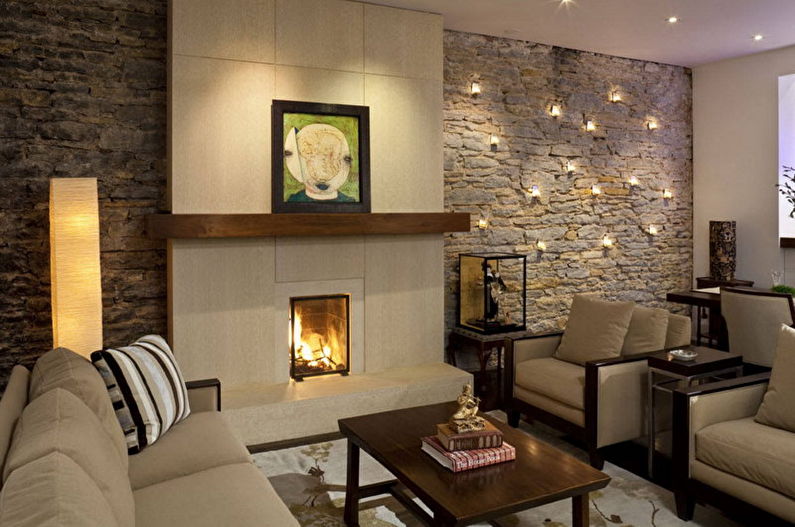
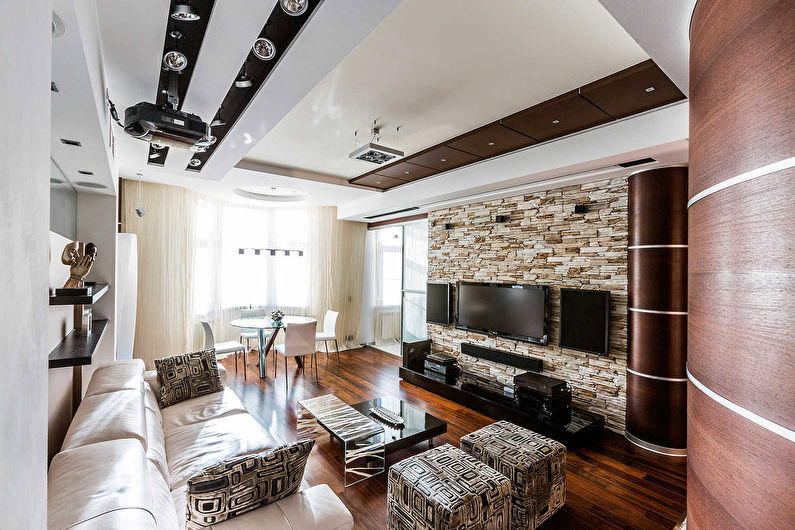
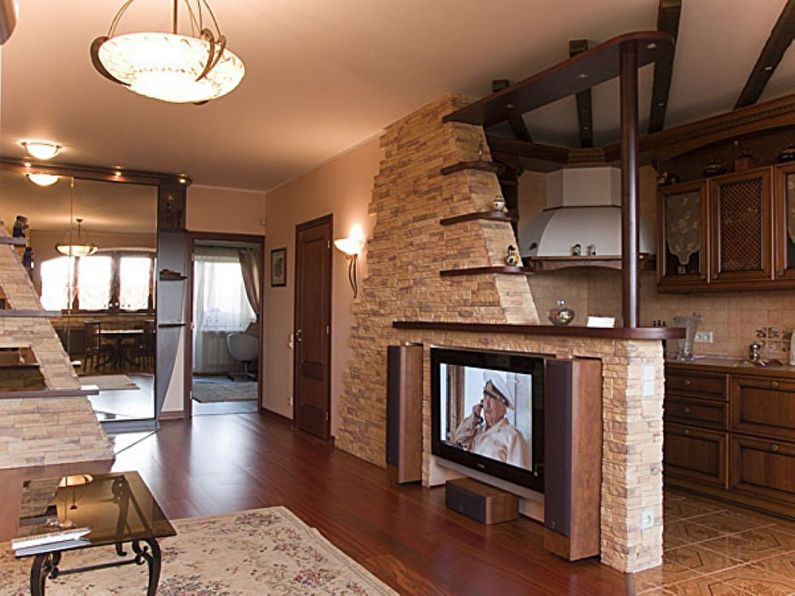
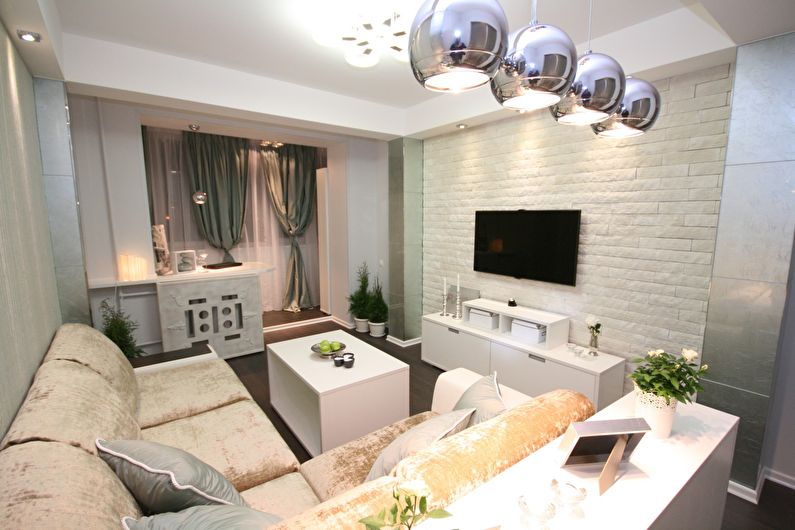
Decorative stone in the interior of the kitchen
The kitchen is exactly the place where the stone cladding looks as natural as possible. Firstly, it recalls the true hearths and stoves in which it has long been customary to cook and bake bread. Secondly, this is the most fire-resistant finish.
Artificial stone countertops confidently won universal love thanks to a perfectly smooth surface on which there are no traces of a knife and hot dishes. In addition, they are very aesthetic - a unique pattern of polished stone creates an impression of luxury. The same advantages differ and polymer sinks, sinks, window sills, bar counters.
In general, choosing a decorative stone for the kitchen, it is advisable to dwell on products with high density coated with glaze or varnish, as porous products (for example, concrete and sand) can accumulate moisture, dirt and odors. The tiles that will be used for cladding the apron should be non-marking, easy to wash and not melt when heated.
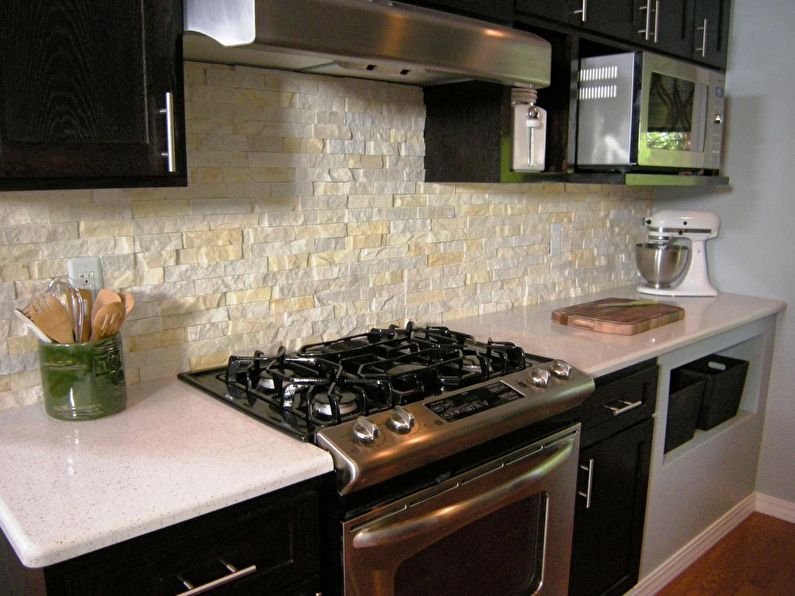
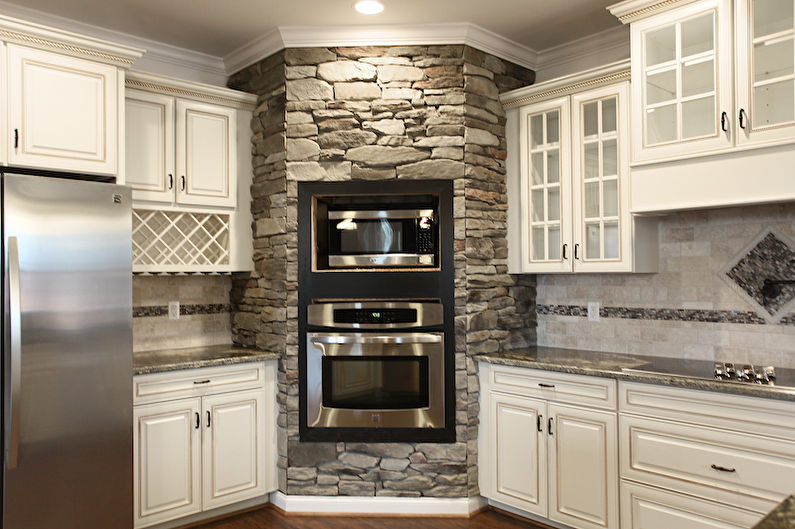
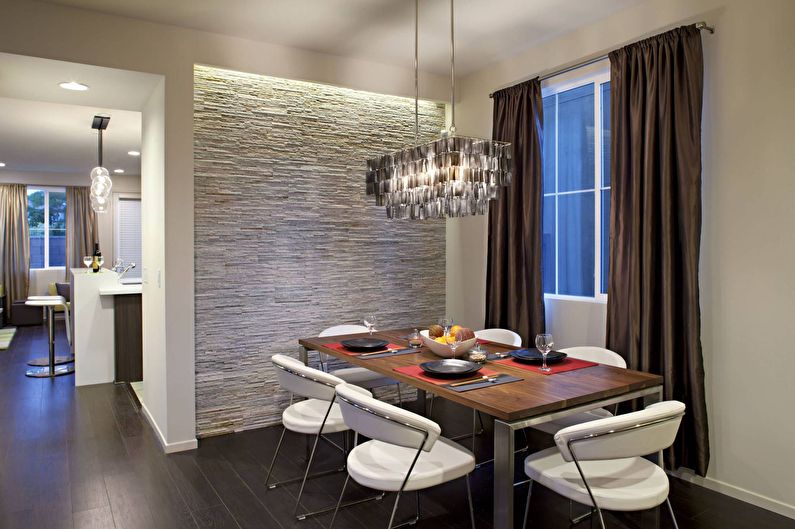
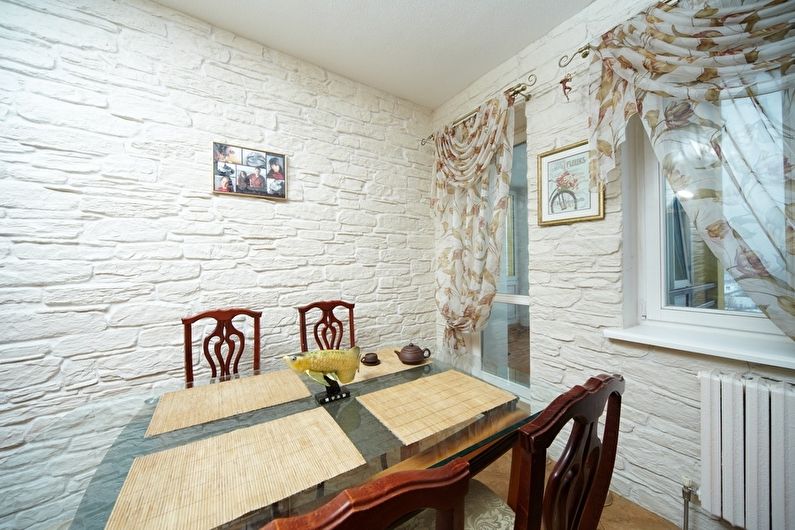

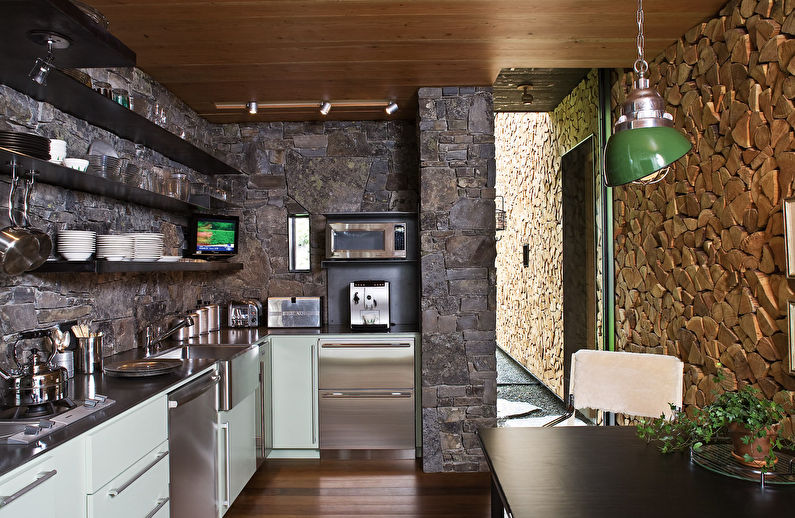
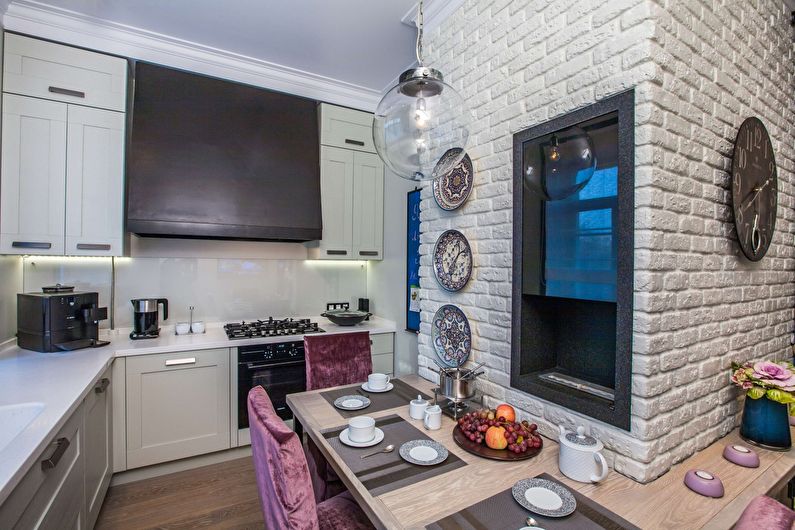

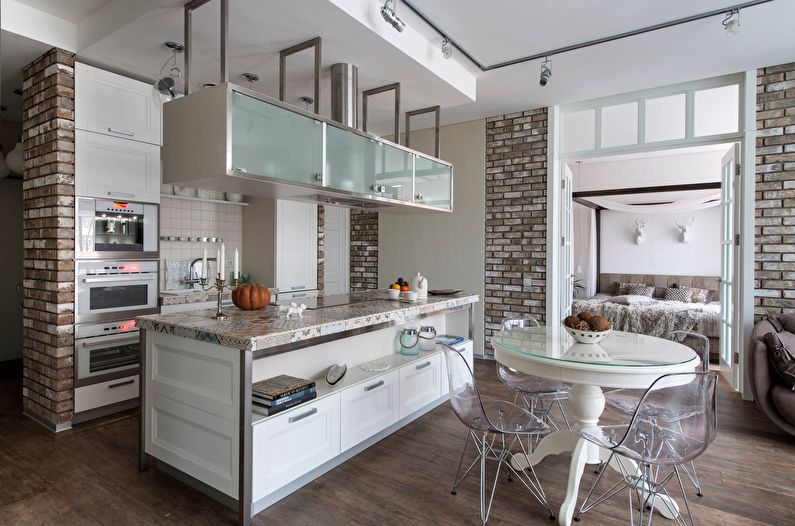

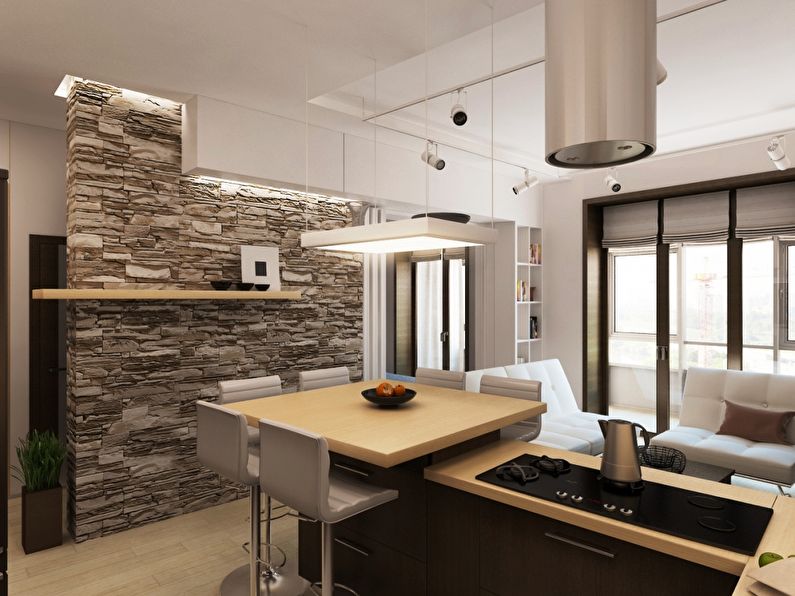
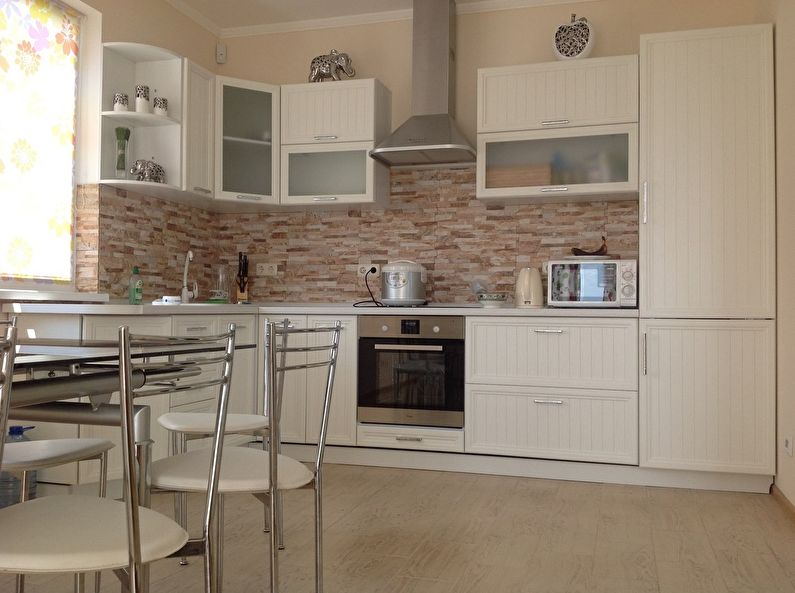
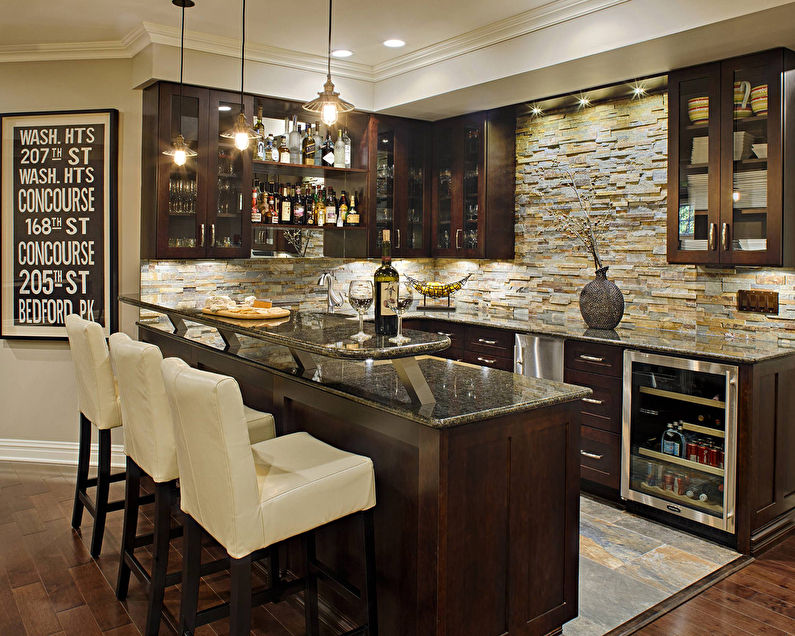
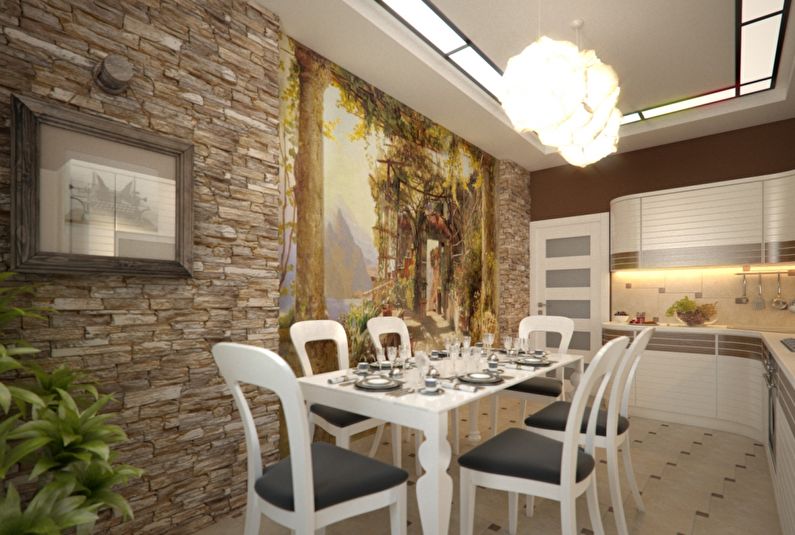
Decorative stone in the bedroom interior
In combination with other natural finishes, masonry will help to create a relaxed atmosphere in a bedroom in a country house or a spacious loft. If you choose a natural color and embossed texture, it will fit well into the Mediterranean, rustic, ethnic interior. As an addition, beams on the ceiling, rude wooden furniture, linen textiles, and fluffy carpets on the floor are suitable.
It is better to refuse glossy imitations of a stone in a bedroom - they look a little cold and can cause disturbing feelings. It is advisable to highlight sections of the walls with stone cladding so that the room does not turn into a gloomy crypt.
Especially spectacular will look lamps, stylized as old metal lanterns, torches or kerosene lamps.
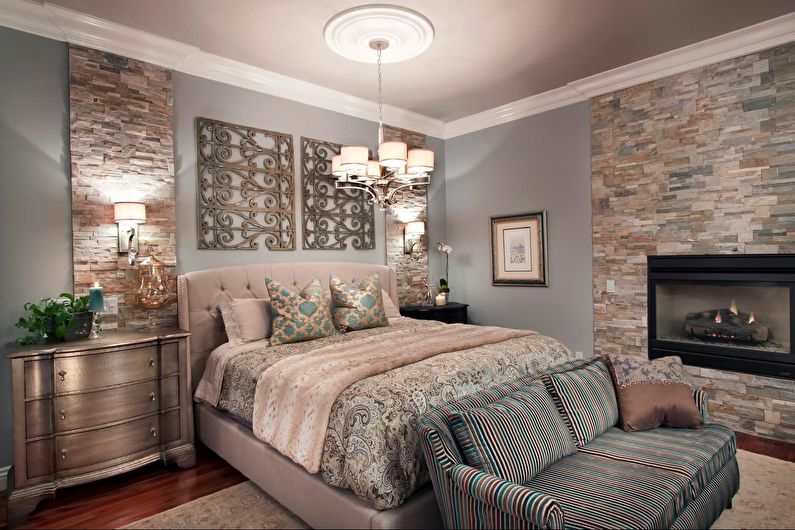
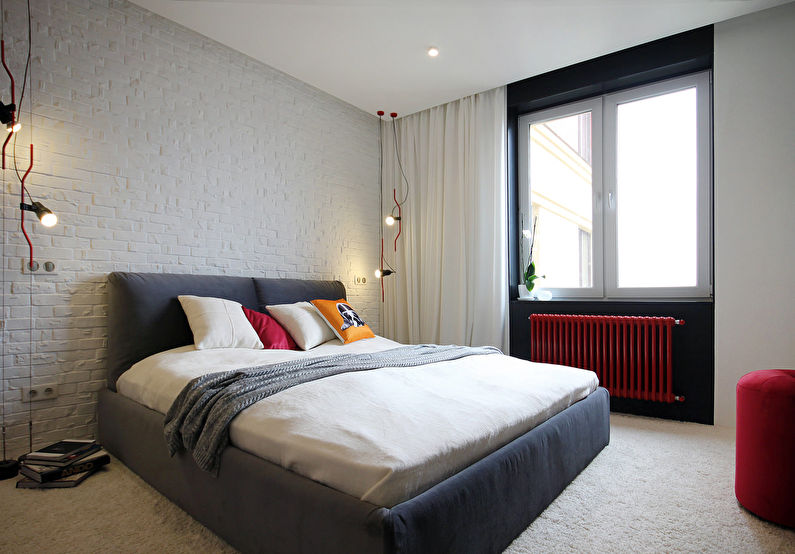
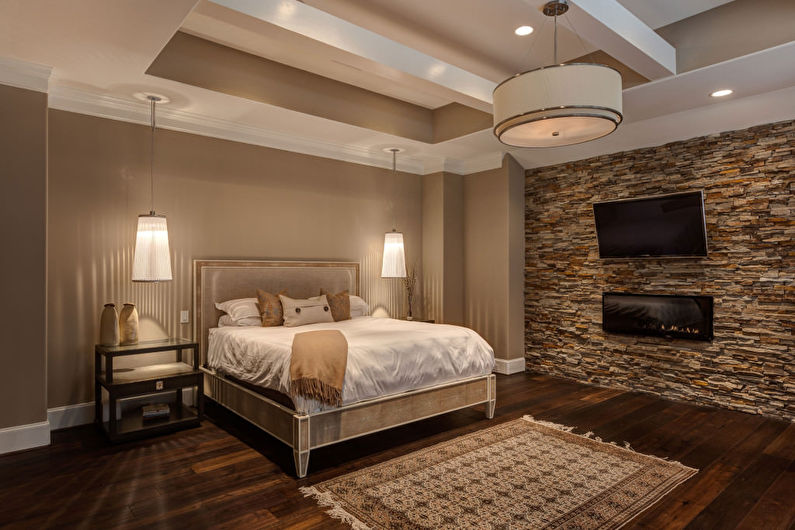
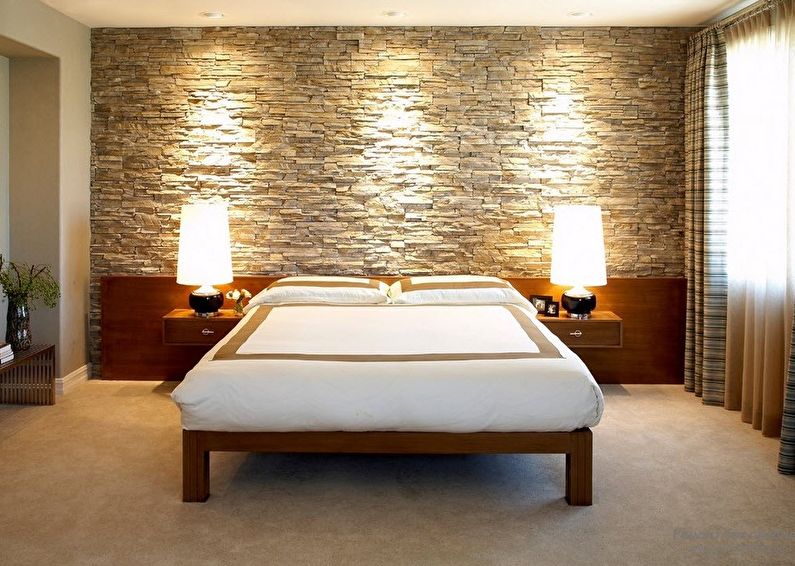

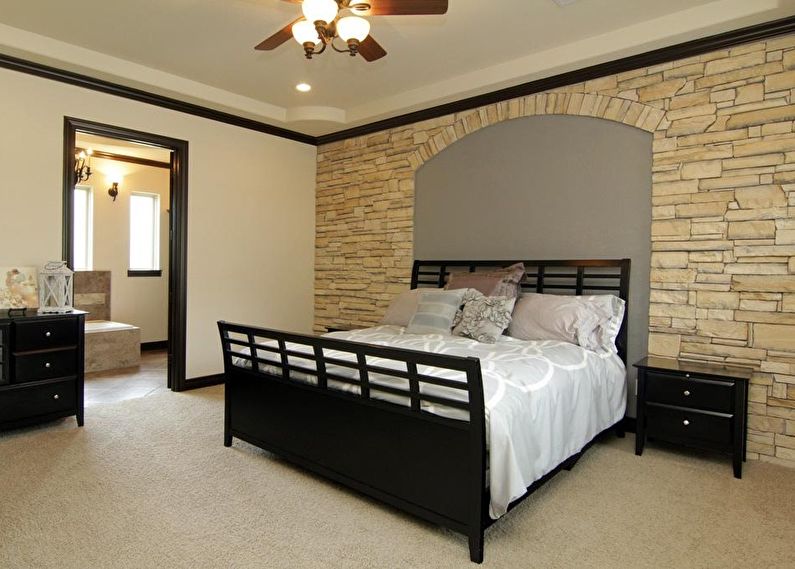
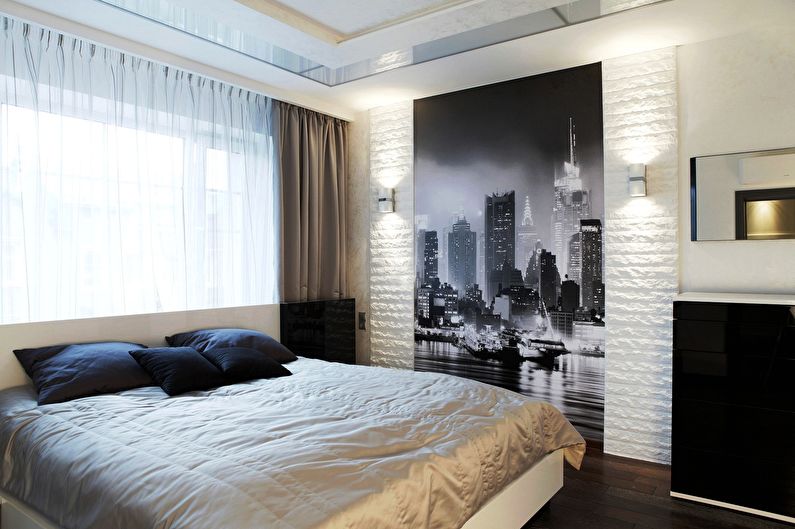
Decorative stone in the interior of the nursery
Artificial stone can be a real find for some design ideas for the design of a children's room. With it, ordinary walls can easily turn into a tower of a fairytale castle, a mysterious cave, a salt dungeon or an underwater kingdom.
An interesting effect can happen if you stone the edges of the photo wallpaper with a landscape - the room will expand, gain perspective. Also in the children's decor you can use an imitation of pebbles: make beautiful mosaics and panels, frames for paintings or mirrors, paint in the form of bugs and snails.
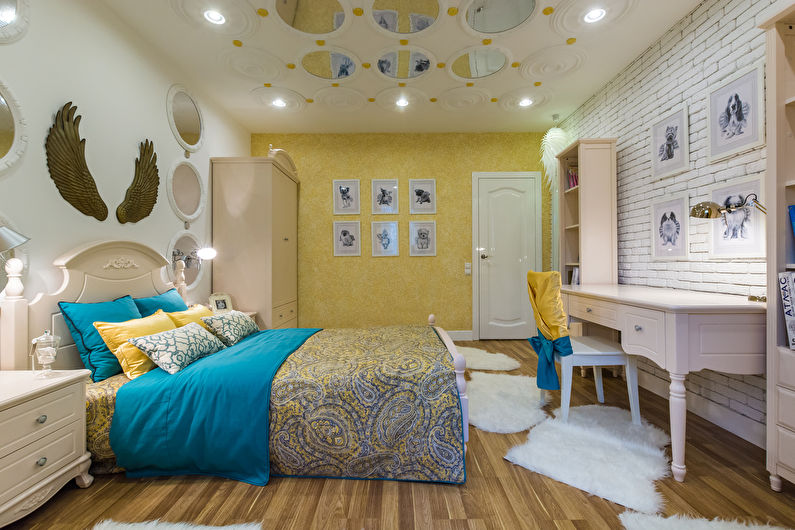

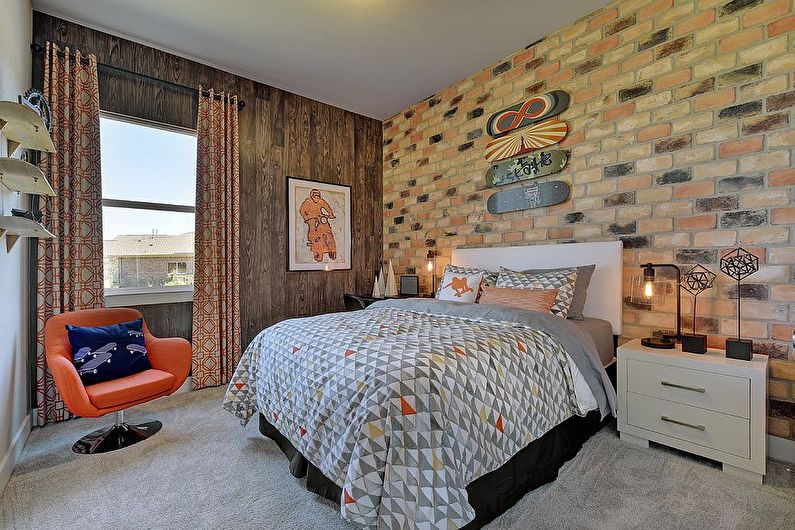
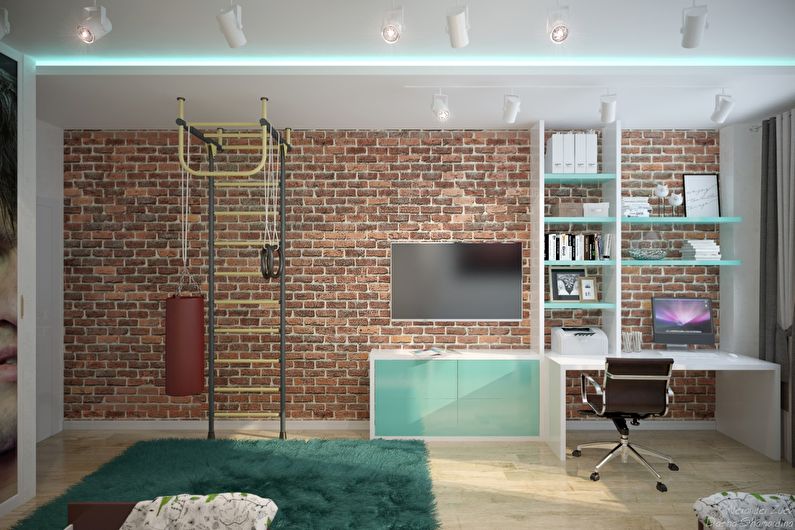
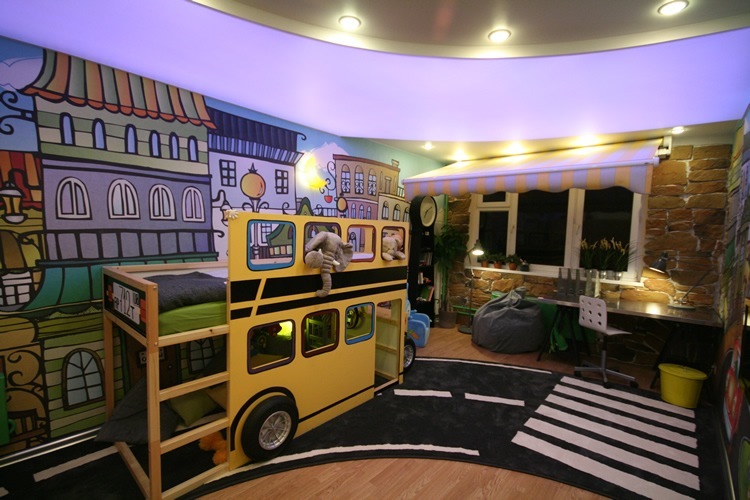
Decorative stone in the interior of the hallway and corridor
The entrance hall, decorated with decorative stone, is somewhat reminiscent of the cozy streets of ancient European cities. It immediately feels the excellent taste of the owners of the house.
The masonry can decorate the walls completely or separate fragments, but in any case it will be an elegant design. Mirrors in forged frames, "street" lamps and benches, as well as a large clock with Roman numerals, like on the town halls, will help emphasize the beauty of the stone trim in the corridor.
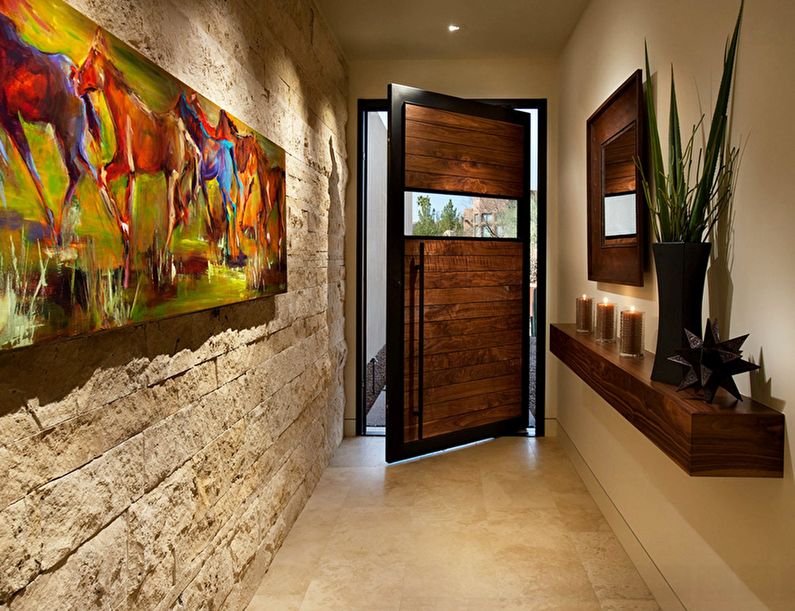

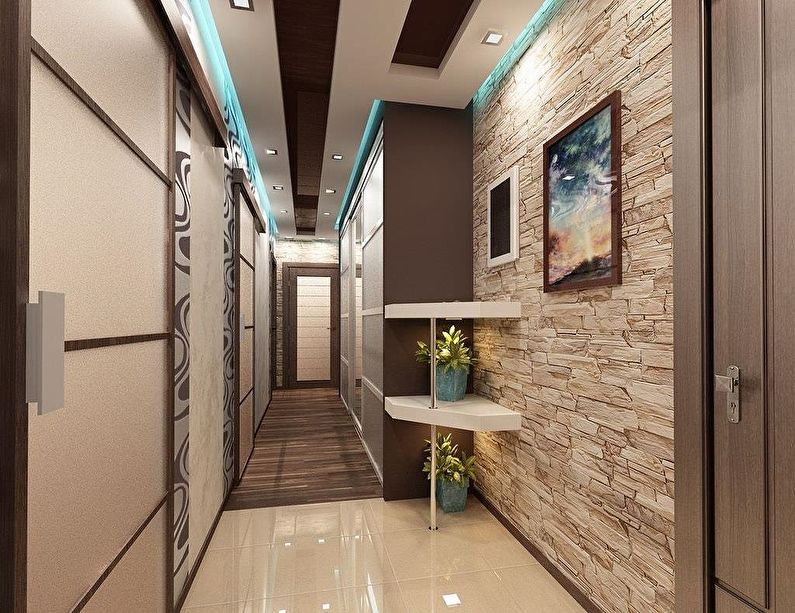
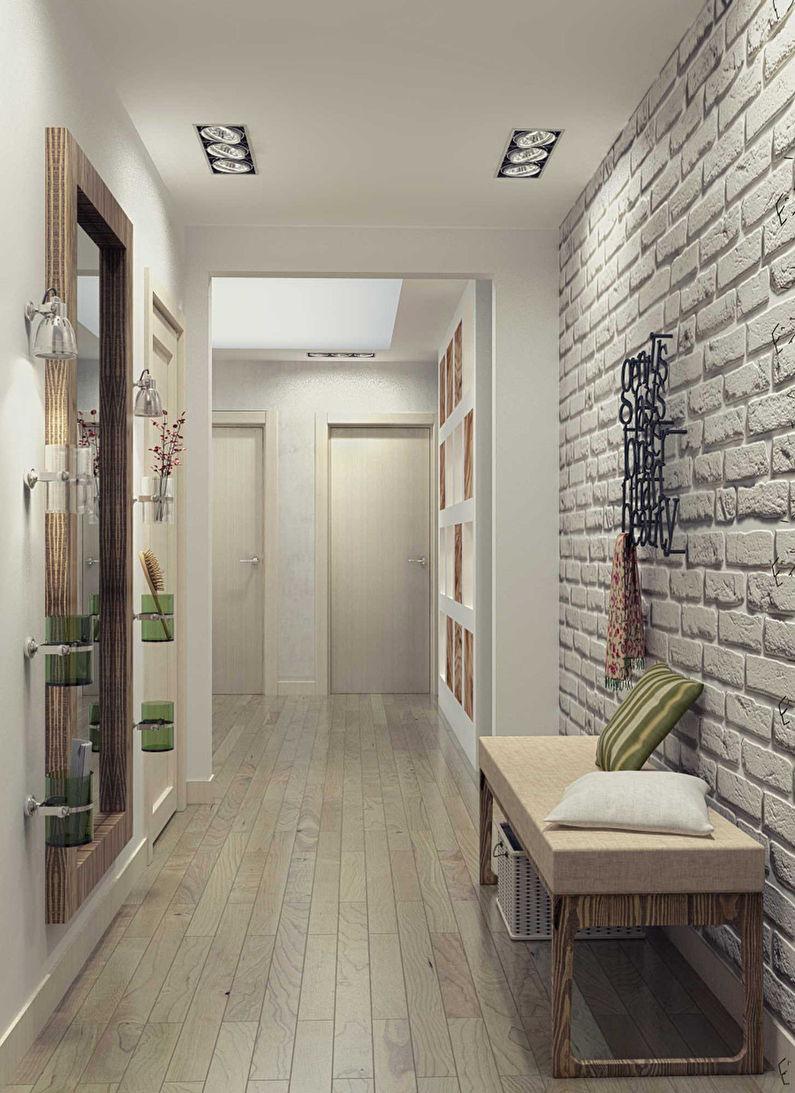
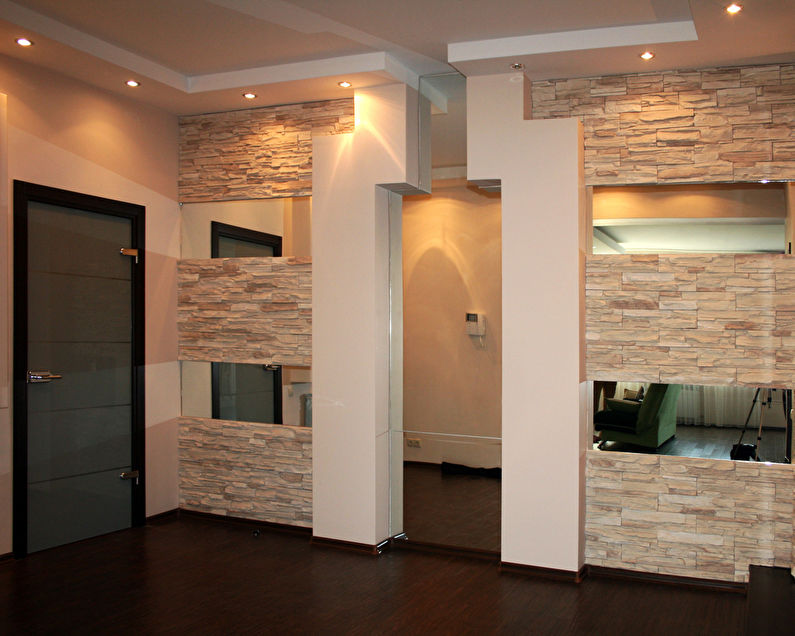
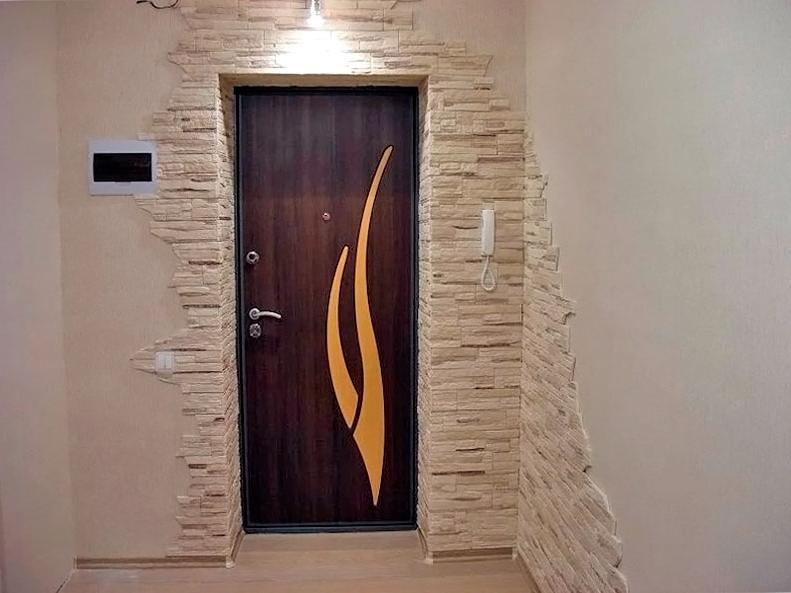
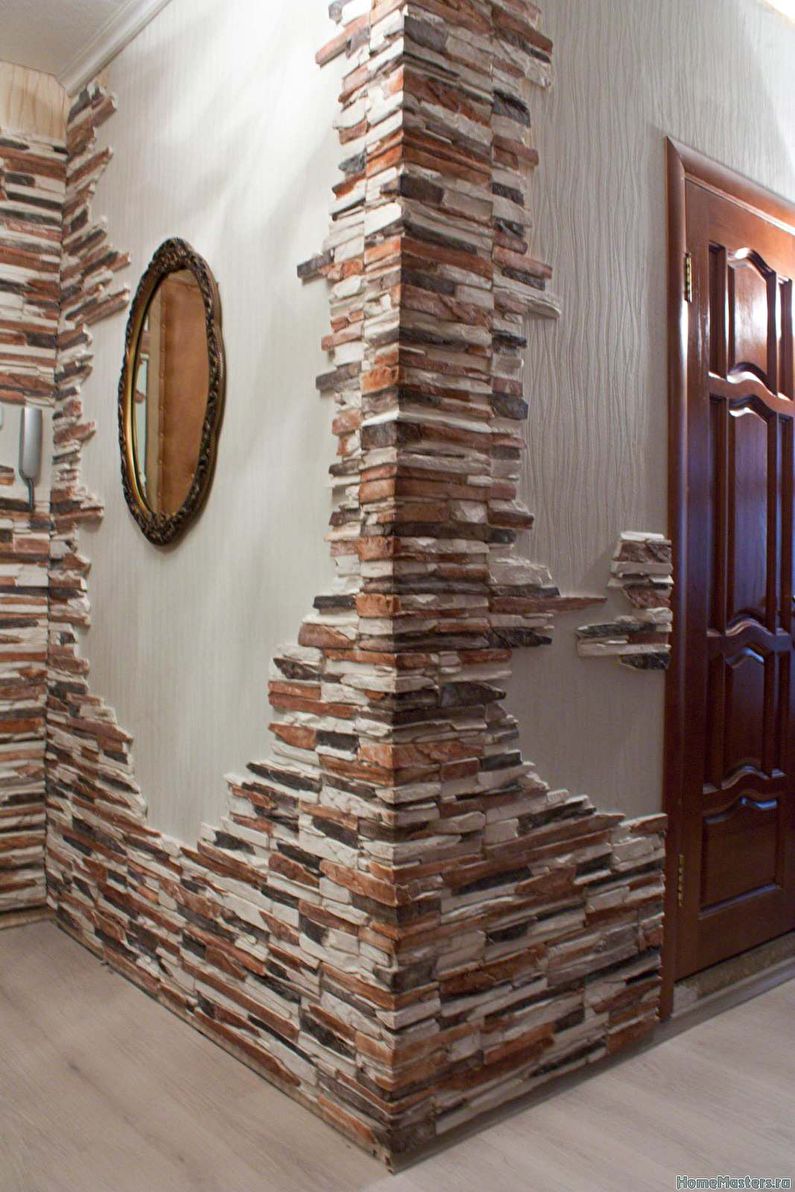
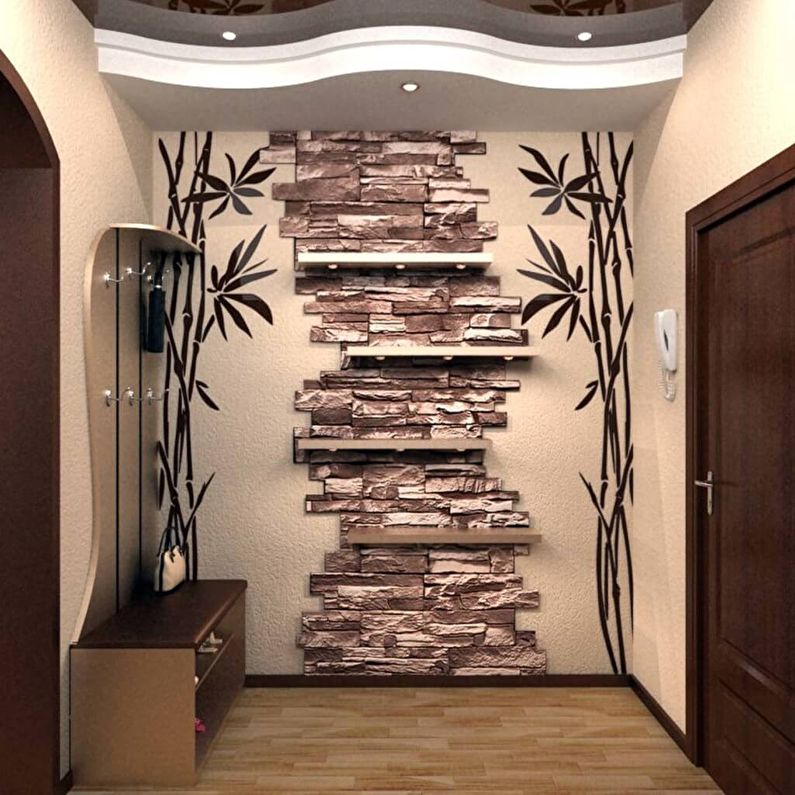
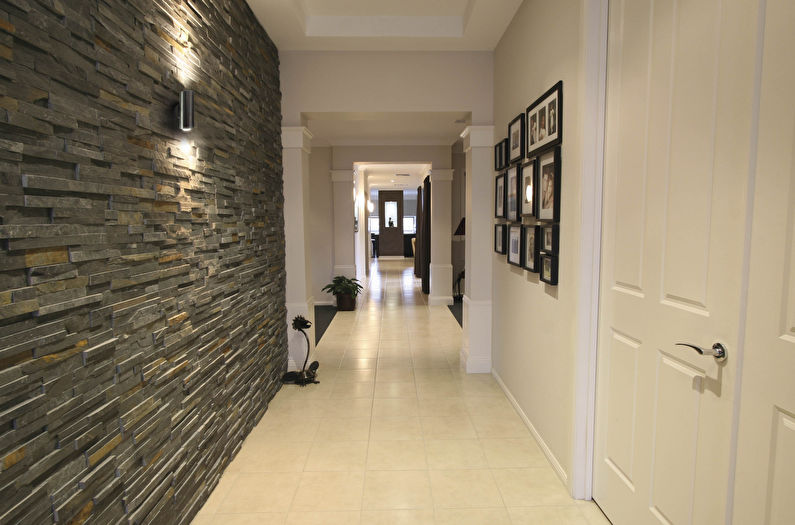
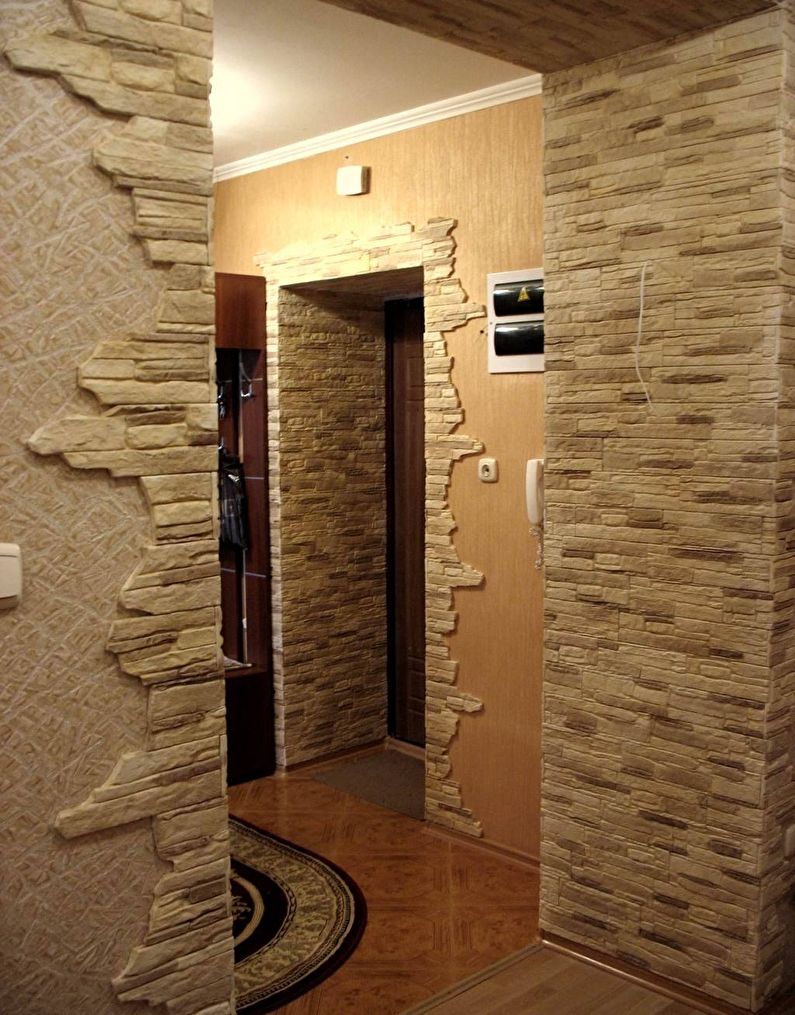
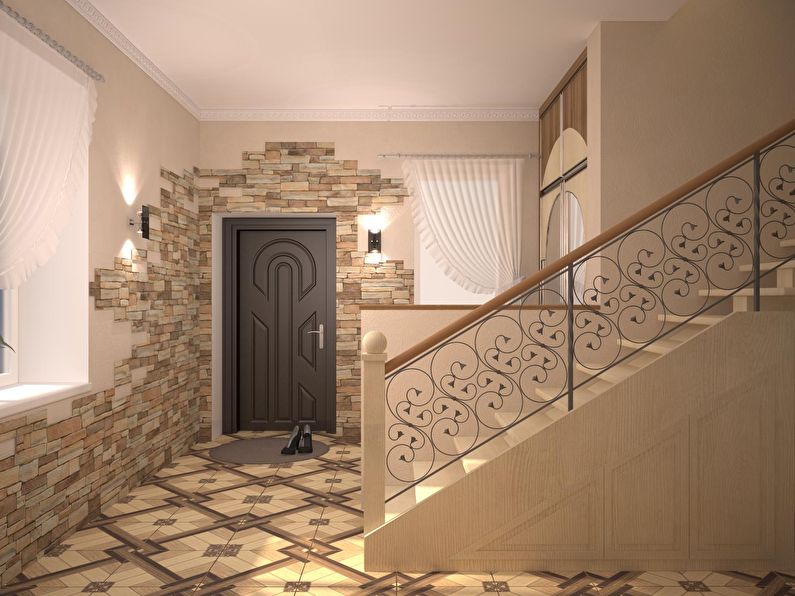
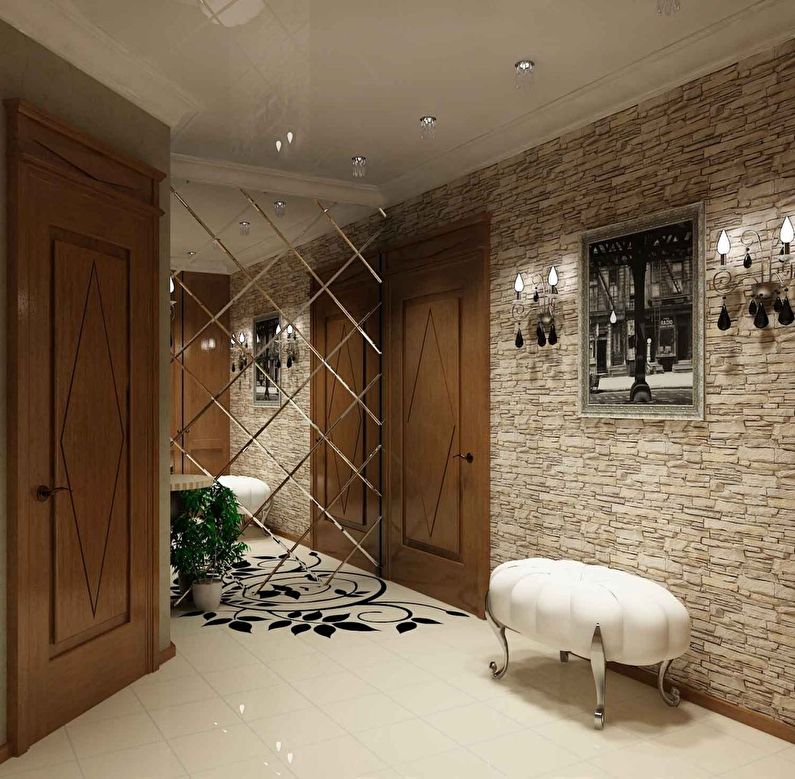
Decorative stone in the interior of the balcony and loggia
Wall decoration with decorative stone is the best suited for an insulated balcony or loggia and will give the interior a rich look.In these small areas you can arrange a cozy place for tea, reading books, organize a work area or a mini greenhouse.

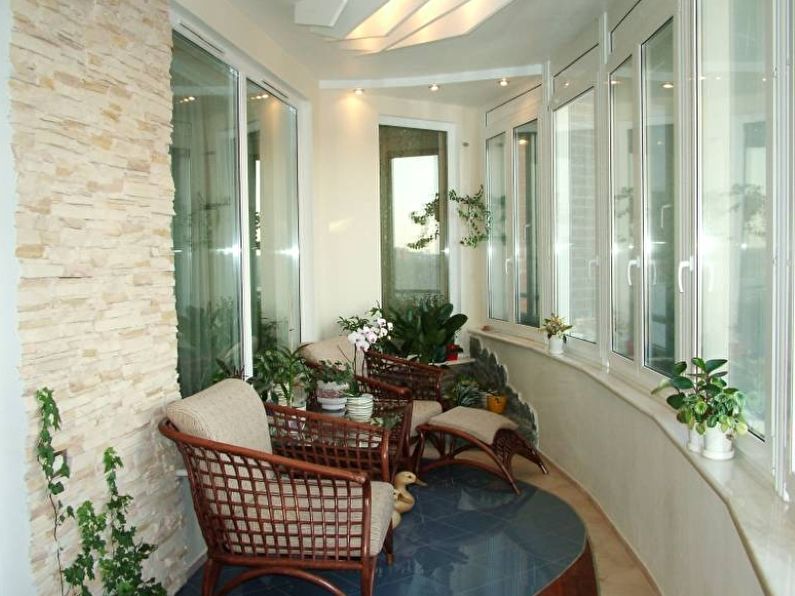
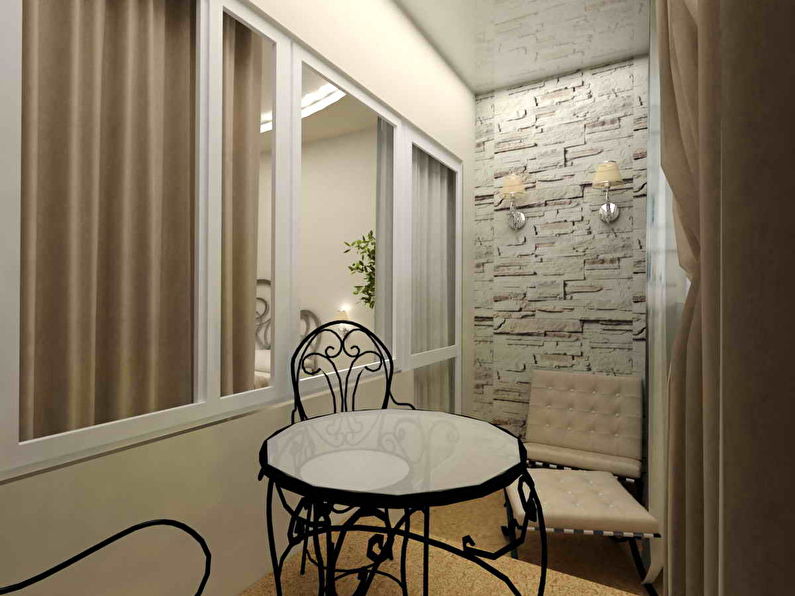
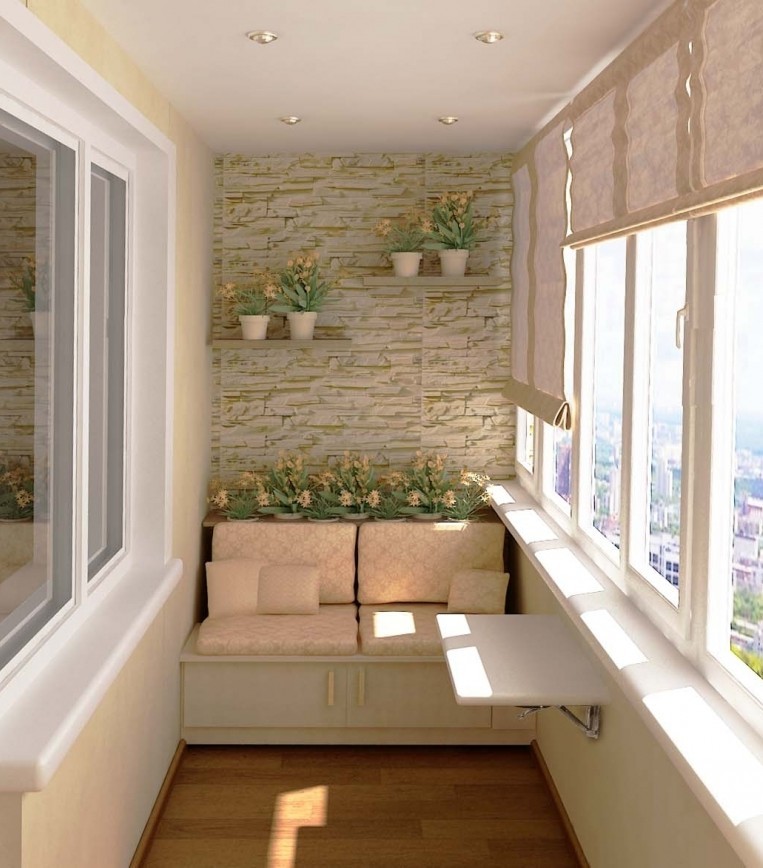

Decorative stone in the interior of the bathroom
Due to the increased humidity, it is better to use only those types of decorative stone in the bathroom that do not have a porous texture and accordingly do not absorb steam.
For the bathroom, glazed stone tiles, porcelain stoneware, products from acrylic and polyester (cast stone) are ideal. By the way, the latter are used not only as a material for flooring or walls - bathtubs and sinks are made from the same polymer resins.
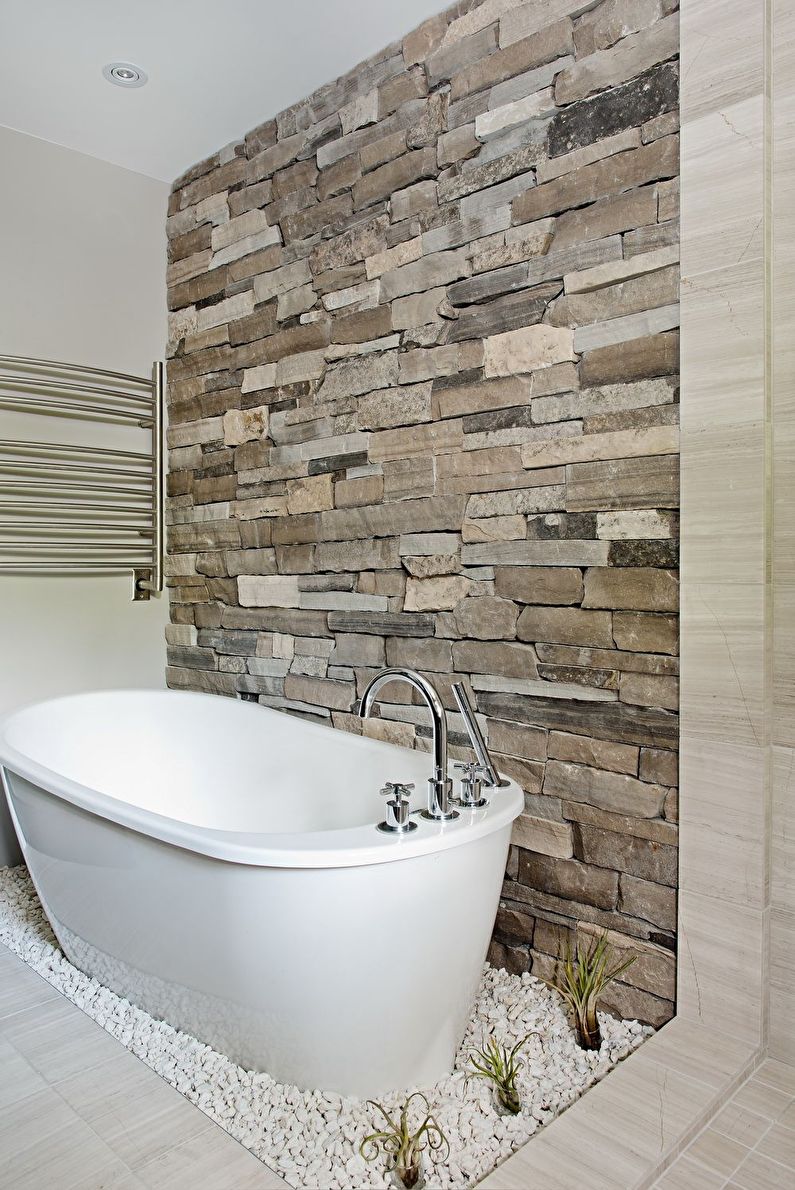
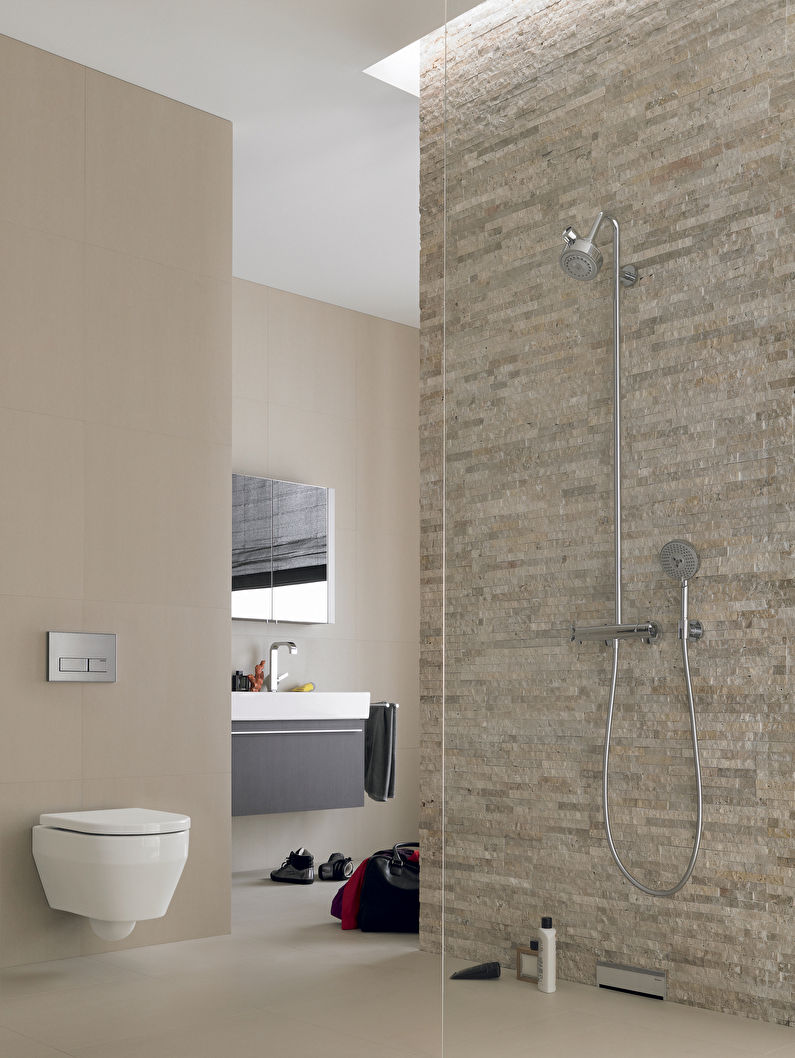

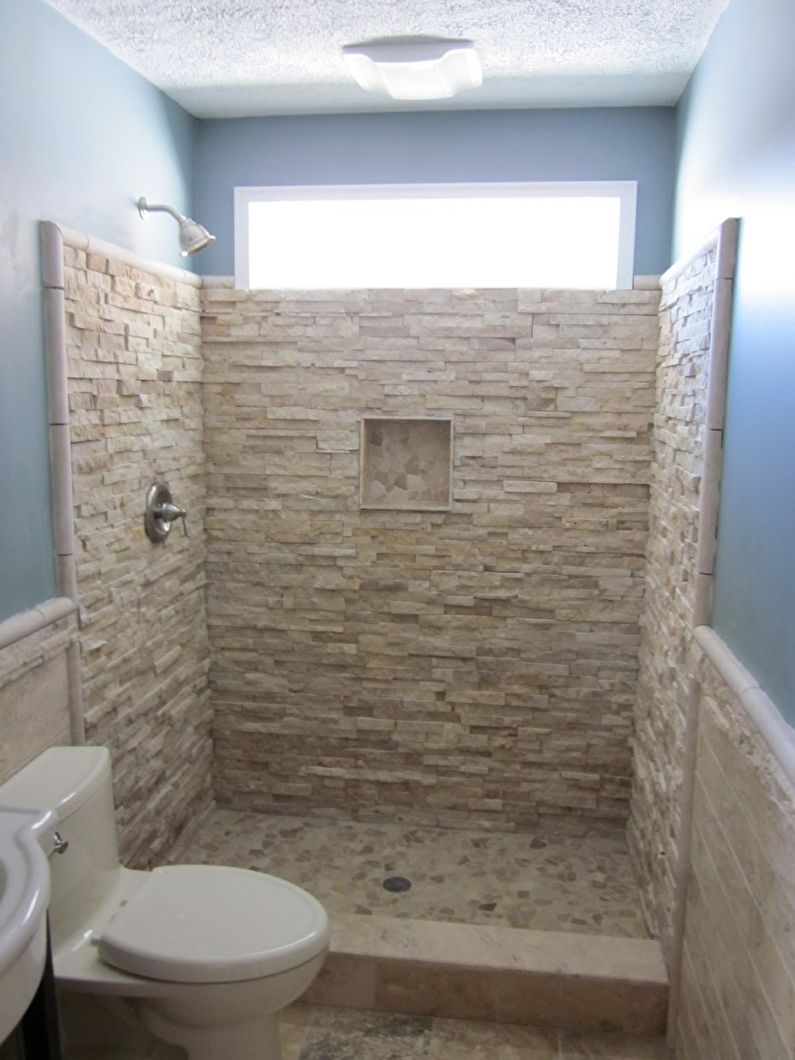
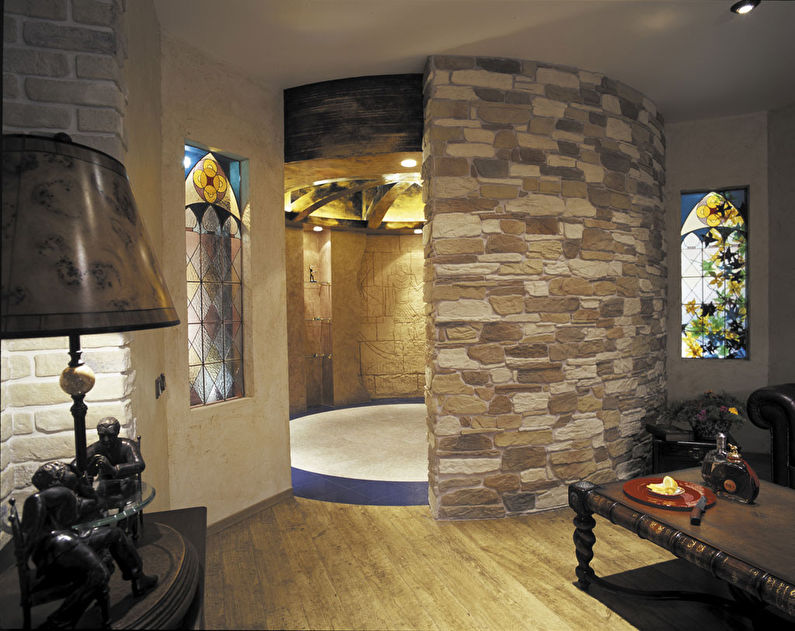


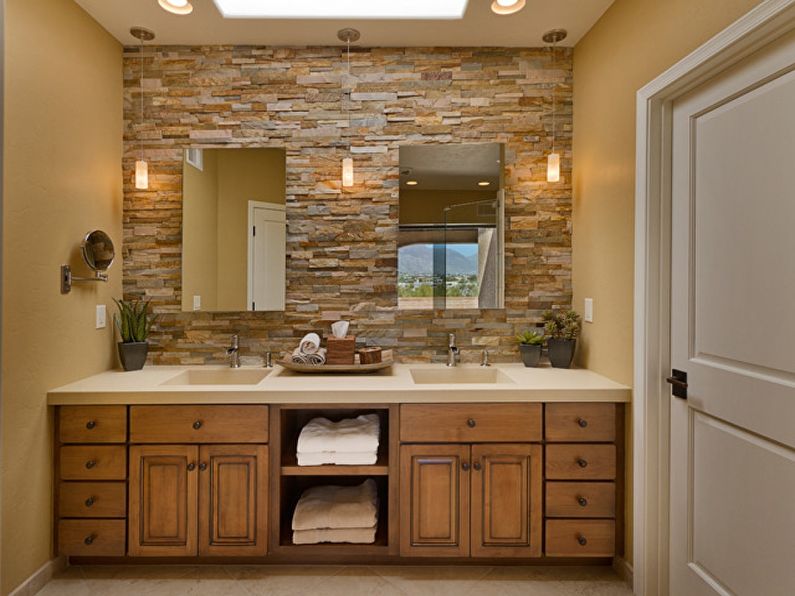
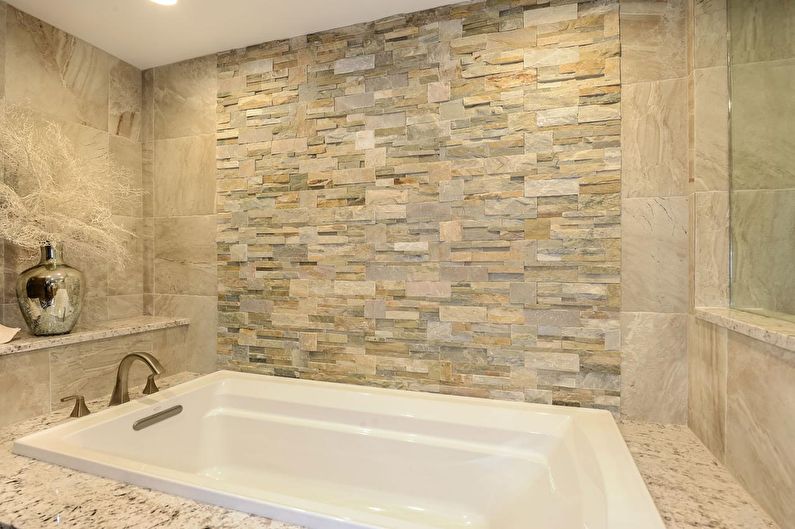
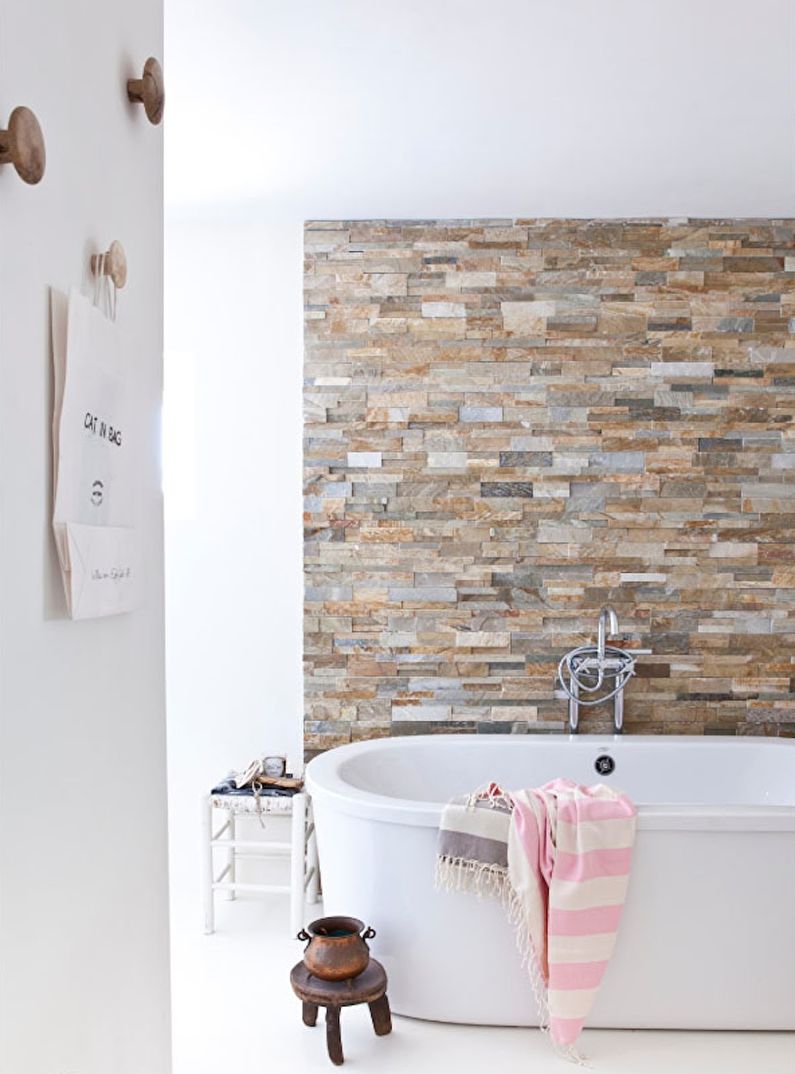
Photo Gallery - More Ideas
In the photo selection below, you will see how you can still use decorative stone in the interior. The gallery of pictures includes the most interesting design solutions for the decoration of stairs, niches and arches.

